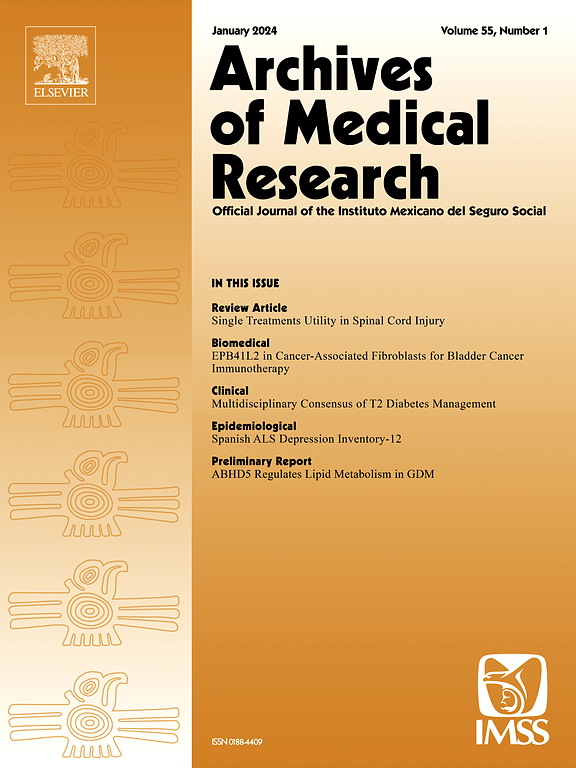Human Voltage-Activated H+ Channel is Highly Expressed in Acute Myeloid Leukemia and is Associated With the Blast Differentiated Stage
IF 3.4
3区 医学
Q1 MEDICINE, RESEARCH & EXPERIMENTAL
引用次数: 0
Abstract
Background
In acute myeloid leukemia (AML), hematopoietic precursors of myeloid cells proliferate rapidly but are arrested at an early stage, impeding their maturation and normal function. The human voltage-activated proton channel (hHv1) is a membrane protein with important roles in myeloid phagocytic cells. This work aimed to evaluate the expression of hHv1 channel as a novel biological marker associated with the process of cell differentiation in AML.
Methods
In this study, we evaluated the expression of the hHv1, at both mRNA and protein levels in AML.
Results
We demonstrated that the expression of hHv1 is upregulated at both mRNA and protein levels in AML. Moreover, our results indicate that hHv1 expression correlates with the degree of monocytic differentiation in AML cells in a pattern similar to that previously reported for NADPH oxidase (NOX2), a relevant cellular structure functionally coupled to the hHv1 channel. However, while increases in NOX2 components have not been associated with improved prognosis or survival, we found that the hHv1 upregulation was associated with better prognosis and survival outcomes.
Conclusions
These results suggest that hHv1 may serve as a novel biomarker for favorable prognosis in AML and may represent a promising therapeutic target.
人电压激活H+通道在急性髓系白血病中高表达并与细胞分化阶段相关
在急性髓性白血病(AML)中,骨髓细胞的造血前体增殖迅速,但在早期阶段被抑制,阻碍了它们的成熟和正常功能。人电压激活质子通道(hHv1)是一种在骨髓吞噬细胞中起重要作用的膜蛋白。本工作旨在评估hHv1通道作为AML细胞分化过程相关的新生物标志物的表达。方法在本研究中,我们评估了hHv1在AML中mRNA和蛋白水平的表达。结果我们证实hHv1在AML中mRNA和蛋白水平的表达上调。此外,我们的研究结果表明,hHv1的表达与AML细胞的单核细胞分化程度相关,其模式与先前报道的NADPH氧化酶(NOX2)相似,后者是一种与hHv1通道功能偶联的相关细胞结构。然而,虽然NOX2成分的增加与预后或生存改善无关,但我们发现hHv1上调与更好的预后和生存结果相关。结论hHv1可能是AML患者预后良好的一种新的生物标志物,可能是一个有前景的治疗靶点。
本文章由计算机程序翻译,如有差异,请以英文原文为准。
求助全文
约1分钟内获得全文
求助全文
来源期刊

Archives of Medical Research
医学-医学:研究与实验
CiteScore
12.50
自引率
0.00%
发文量
84
审稿时长
28 days
期刊介绍:
Archives of Medical Research serves as a platform for publishing original peer-reviewed medical research, aiming to bridge gaps created by medical specialization. The journal covers three main categories - biomedical, clinical, and epidemiological contributions, along with review articles and preliminary communications. With an international scope, it presents the study of diseases from diverse perspectives, offering the medical community original investigations ranging from molecular biology to clinical epidemiology in a single publication.
 求助内容:
求助内容: 应助结果提醒方式:
应助结果提醒方式:


